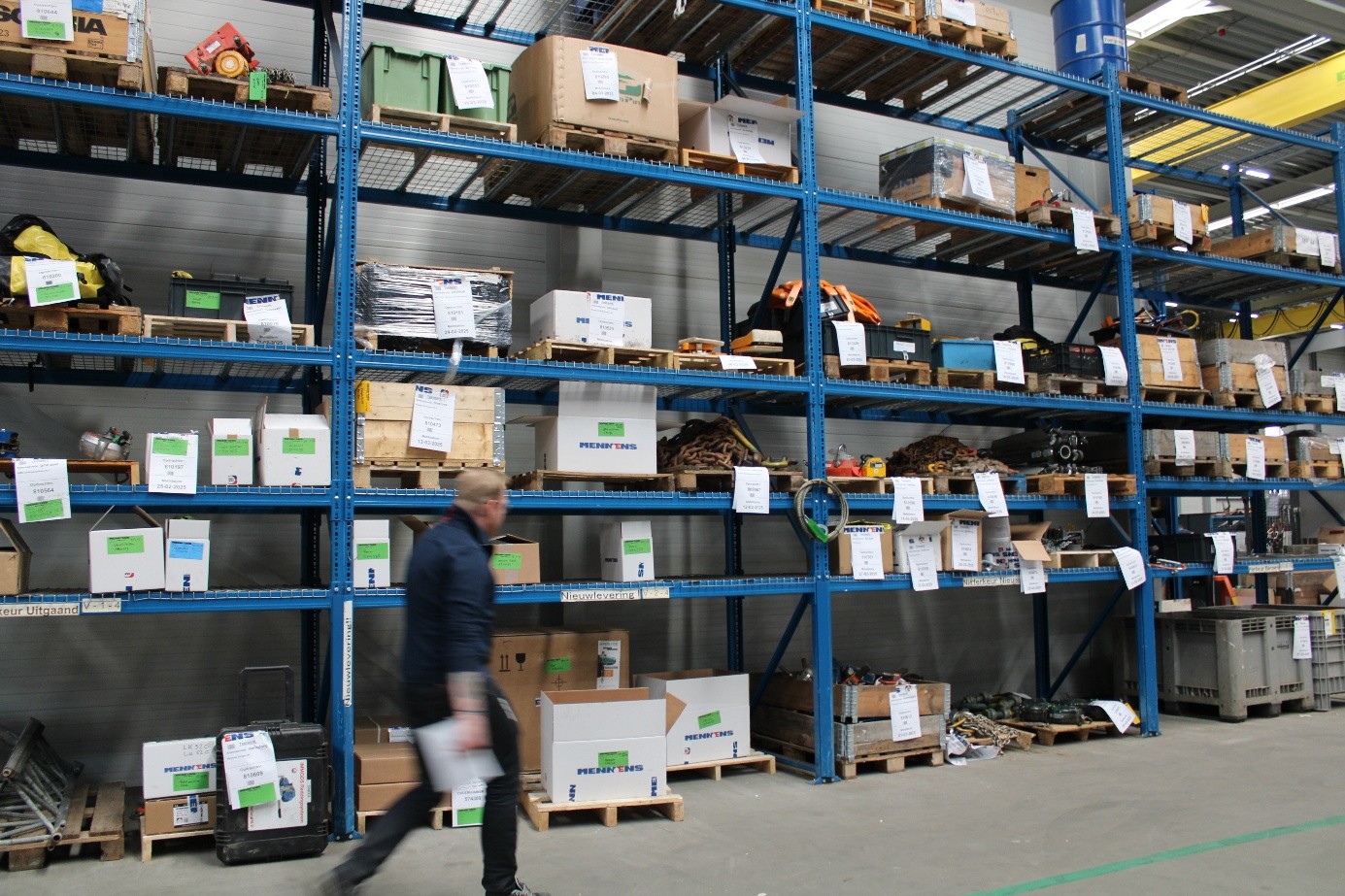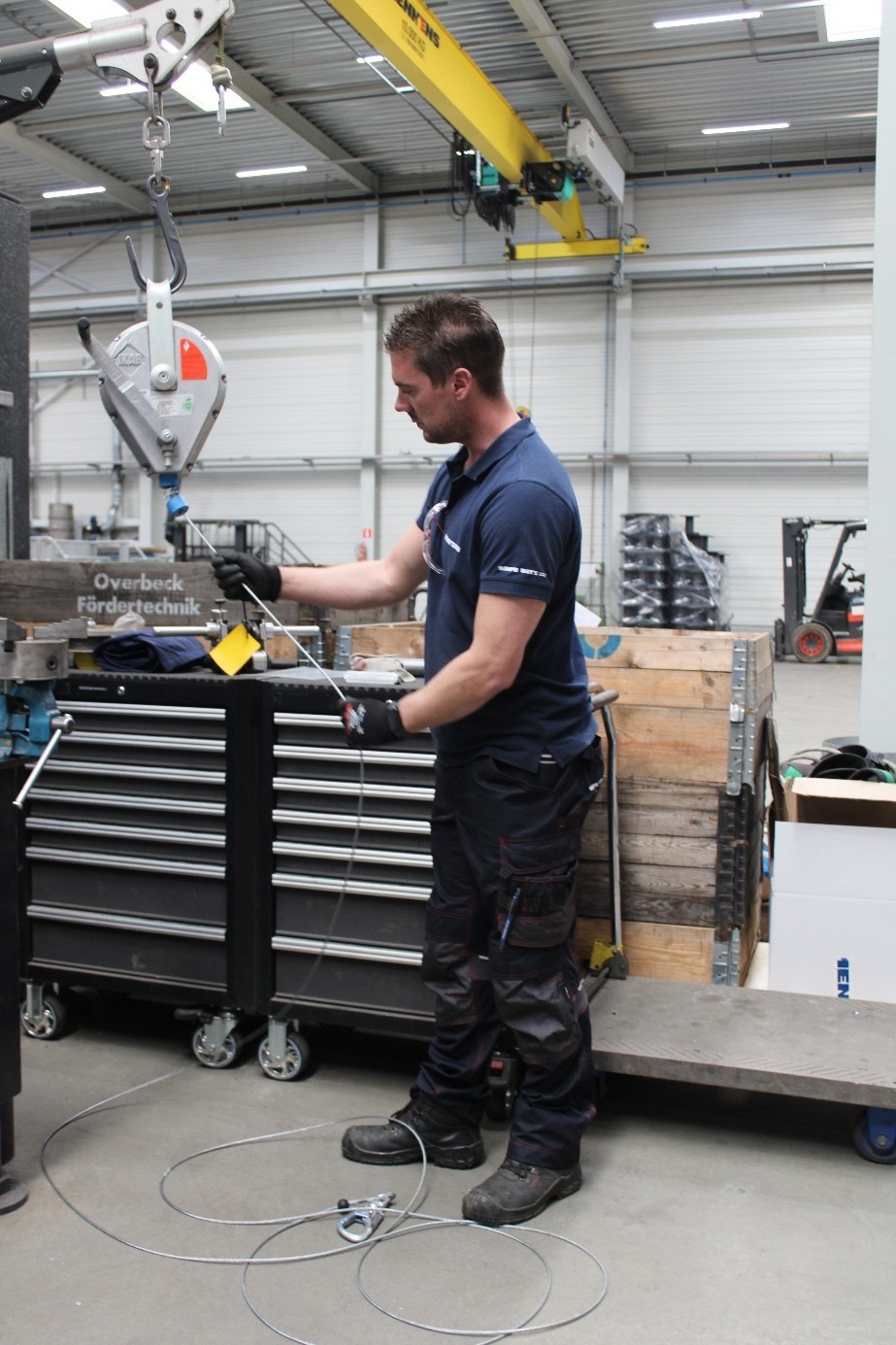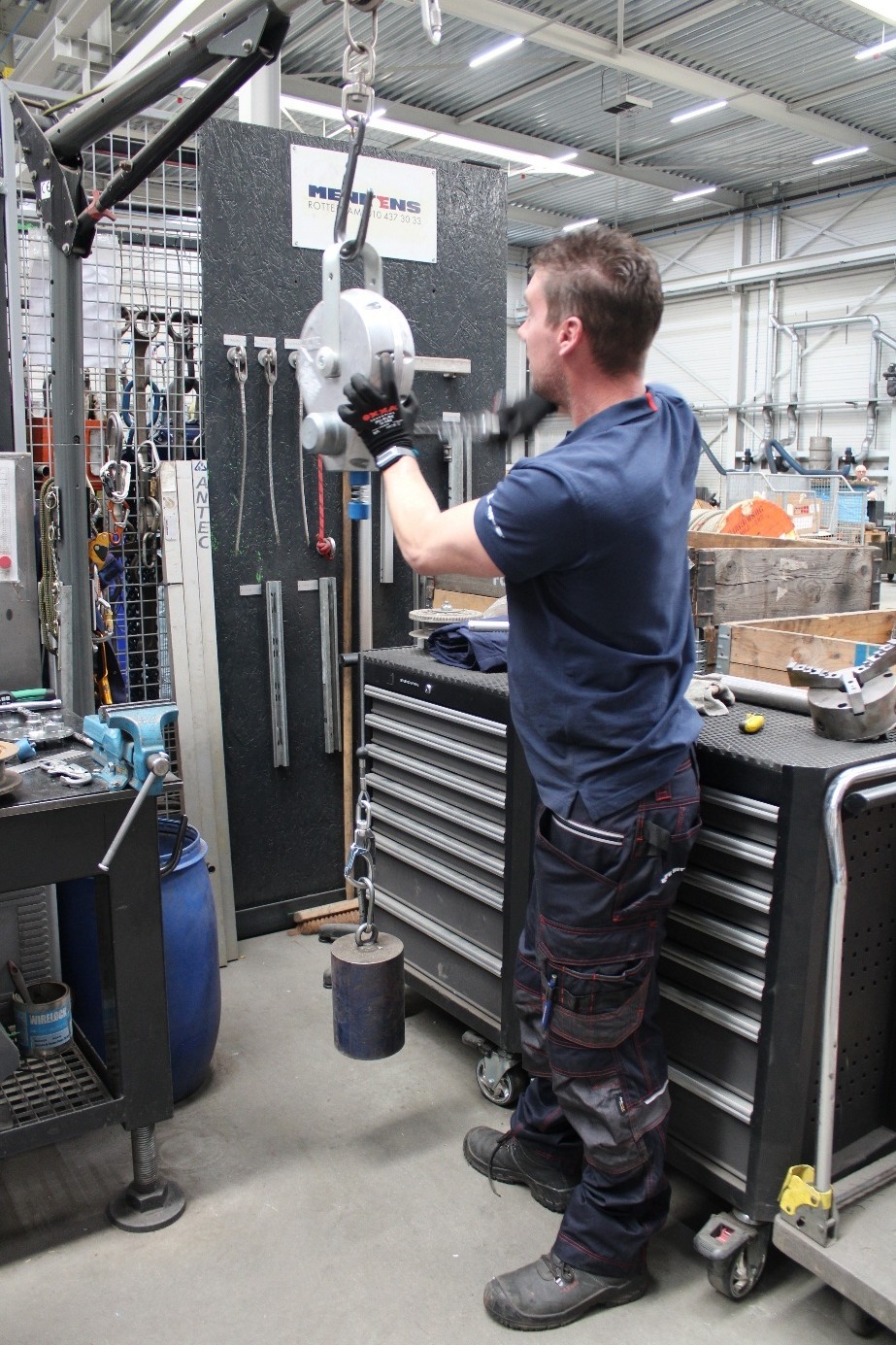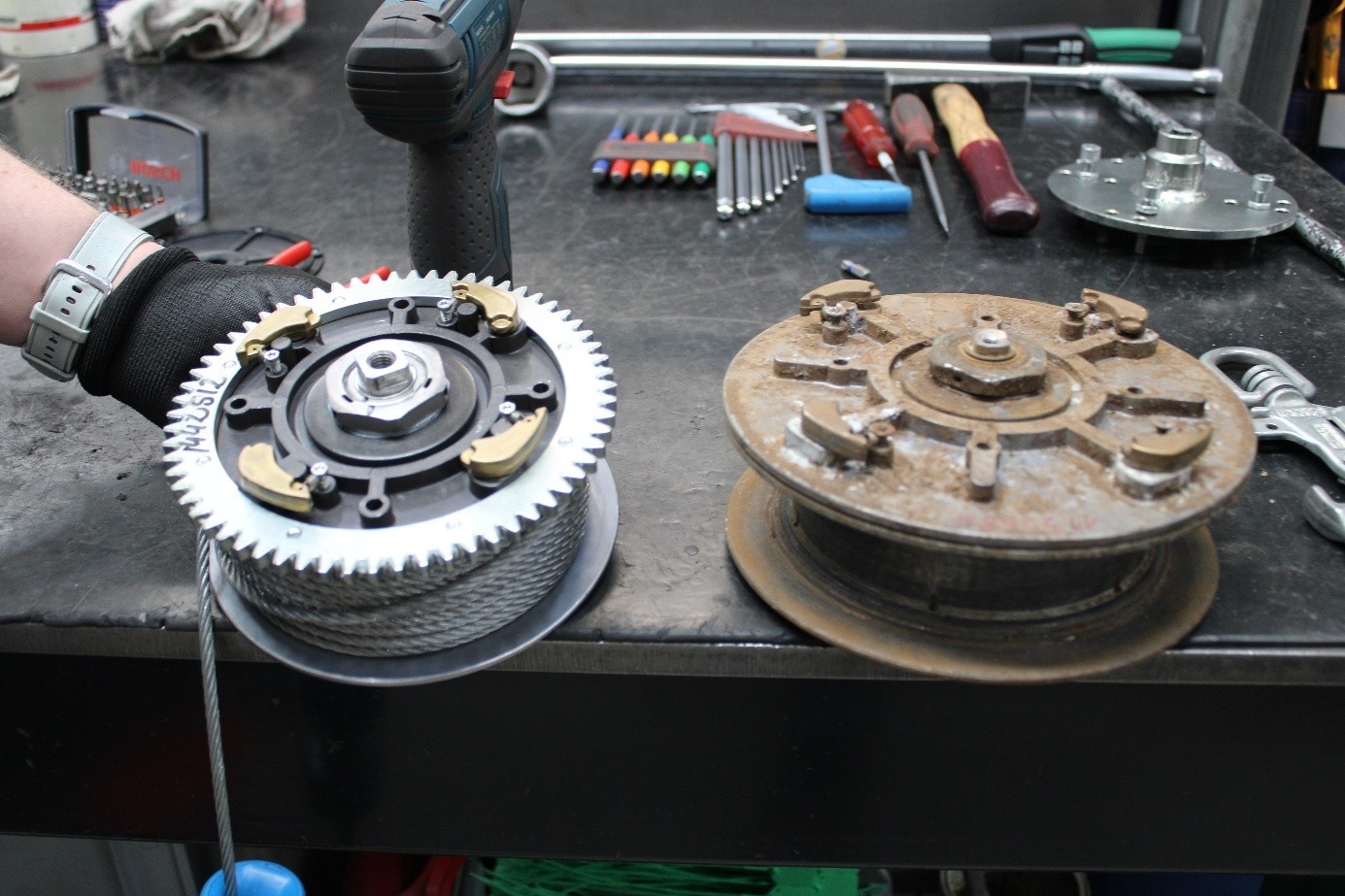
A look behind the scenes: inspecting fall arrest blocks
From construction site to shipyard: what can your fall block withstand?
A fall block that is stored in a tidy workshop and well maintained by its user will usually last for years (you can read how to do this here). In addition to using this equipment with care, the conditions in which you use it also make a big difference. In the harbor or offshore, concrete dust, salt water, rain, and mud always find their way inside. Incoming blocks therefore often have rusty springs, stuck brakes, and wiring that refuses to retract. Some fall blocks look so battered that one glance is enough: this fall stop block needs a serious overhaul.
How is a fall block inspected?
When inspecting fall arrest blocks, safety is paramount—which means that every component is carefully checked. What you see below is a small part of the thorough inspection and repair process. Each fall arrest block goes through a strict step-by-step plan to ensure that it fully complies with the highest safety standards. Nothing is overlooked!

1: The fall arrest blocks arrive at Mennens Rotterdam. From compact personal fall arrest blocks to robust rescue winch systems. What do they have in common? They are due for their annual inspection, at the very least.

2: Cables, springs, and brake systems are checked for rust, wear, and damage. Completely rusted internals? These are rejected. Sometimes the block looks fine on the outside, but mud gushes out of the internals when the cable is pulled out: then you know that something is wrong internally.

3: Naturally, the brake mechanism is also checked to ensure it is still working properly by means of a weight. This brake mechanism must both break your fall and prevent the fall from resulting in an abrupt impact, which can lead to internal injuries. People are generally becoming heavier. Whereas harnesses and fall arresters used to be certified for 90 kilograms, this has now increased to 136 kilograms. This means that the braking systems are also being adapted to these standards. After all, breaking a fall for someone weighing 100 kilograms simply requires much more force than for someone weighing 70 kilograms.

4: The housing is unscrewed and the inner workings exposed. Here you can see the difference between a well-maintained and a less well-maintained fall arrest block.





